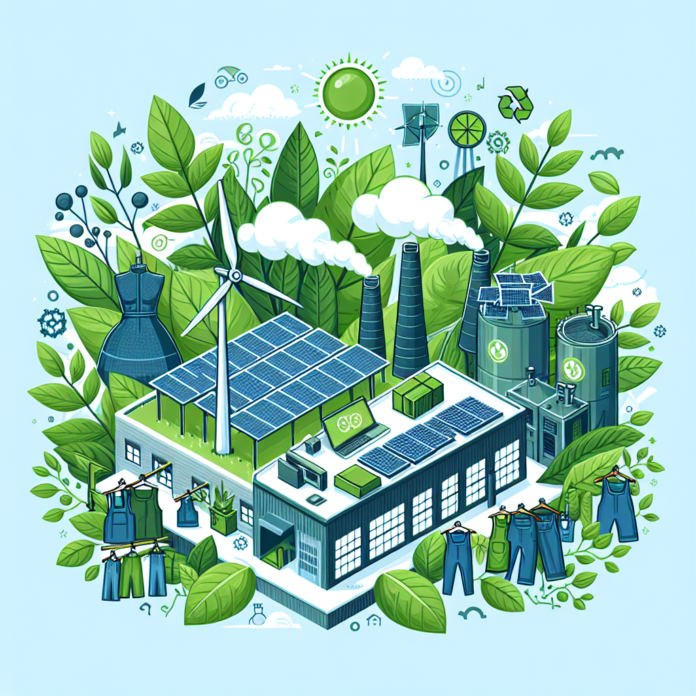Environmental Sustainability Crucial for RMG Industry
Environmental Sustainability is Imperative for the RMG Industry
The readymade garment (RMG) industry plays a pivotal role in the global economy, providing employment to millions and contributing significantly to the GDP of many developing countries. However, the environmental impact of this industry cannot be overlooked. From the extensive use of water and energy to the emission of greenhouse gases and the generation of waste, the RMG industry faces a myriad of environmental challenges. Therefore, adopting sustainable practices is not only beneficial but essential for the industry’s long-term viability.
Water Consumption and Pollution
The RMG industry is notoriously water-intensive. The dyeing and finishing processes consume vast amounts of water, often leading to the depletion of local water resources. Moreover, the wastewater generated is frequently discharged untreated into rivers and lakes, causing severe water pollution. Implementing water-efficient technologies and wastewater treatment systems can significantly mitigate these issues.
Energy Use and Carbon Emissions
Energy consumption in the RMG industry is another pressing concern. The reliance on fossil fuels for energy needs results in substantial carbon emissions, contributing to global warming. Transitioning to renewable energy sources such as solar and wind power can reduce the industry’s carbon footprint. Additionally, energy-efficient machinery and practices can further decrease energy consumption.
Waste Generation
The production of garments generates a considerable amount of waste, including fabric scraps, defective products, and packaging materials. Proper waste management strategies, such as recycling and upcycling, can help minimize waste. Companies can also explore circular economy models, where products are designed for reuse and recycling, thereby extending their lifecycle.
Use of Hazardous Chemicals
The RMG industry often uses hazardous chemicals in the dyeing and finishing processes. These chemicals can be harmful to both the environment and human health. Adopting eco-friendly dyes and finishes, and ensuring proper handling and disposal of chemicals, can mitigate these risks. Certifications such as OEKO-TEX and Bluesign can guide companies in choosing safer chemical alternatives.
Social Responsibility
Environmental sustainability in the RMG industry is closely linked to social responsibility. Ensuring fair wages, safe working conditions, and respect for workers’ rights are integral to sustainable practices. Companies that prioritize the well-being of their workers often find it easier to implement and maintain environmental sustainability measures.
Consumer Awareness and Demand
Consumer awareness and demand for sustainable products are on the rise. Educating consumers about the environmental impact of their purchases can drive the demand for eco-friendly garments. Brands that are transparent about their sustainability efforts often gain a competitive edge in the market.
Regulatory Compliance
Governments and international bodies are increasingly enacting regulations aimed at reducing the environmental impact of the RMG industry. Compliance with these regulations is crucial for companies to operate legally and sustainably. Staying abreast of regulatory changes and adopting proactive measures can help companies avoid penalties and enhance their reputation.
Technological Innovations
Technological innovations hold great promise for improving environmental sustainability in the RMG industry. Advances in materials science, such as the development of biodegradable and recyclable fabrics, can reduce the environmental footprint of garments. Automation and digital technologies can also enhance efficiency and reduce waste.
Collaborative Efforts
Collaboration among stakeholders, including manufacturers, suppliers, governments, and non-governmental organizations, is essential for driving sustainability in the RMG industry. Joint initiatives, such as industry-wide sustainability standards and shared resources for research and development, can lead to more significant environmental improvements.
Conclusion
Environmental sustainability is not a luxury but a necessity for the RMG industry. By addressing water consumption, energy use, waste generation, hazardous chemicals, and social responsibility, the industry can reduce its environmental impact and ensure long-term success. Consumer awareness, regulatory compliance, technological innovations, and collaborative efforts will play crucial roles in this transformation. As the global demand for sustainable products continues to grow, the RMG industry has a unique opportunity to lead by example and contribute to a more sustainable future.


